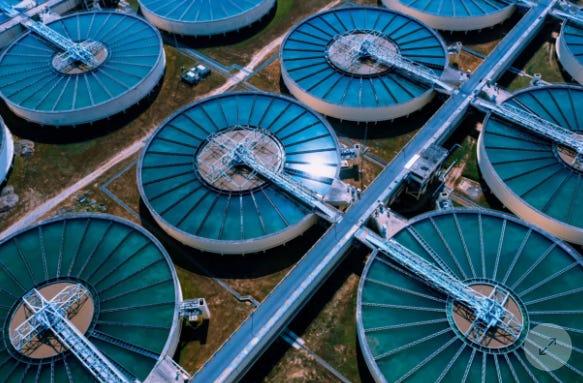Teens invent incredible device while searching for way to tackle one of the world's most challenging sources of pollution: 'Current solutions aren't really effective'
A visit to a water treatment plant inspired a pair of Texas teenagers to develop a device to filter one of the most pervasive forms of toxic waste of modern times: microplastics.
A visit to a water treatment plant inspired a pair of Texas teenagers to develop a device to filter one of the most pervasive forms of toxic waste of modern times: microplastics.
As detailed by Business Insider, Victoria Ou and Justin Huang, who have been friends since elementary school, won $50,000 from the Gordon E. Moore Award for Positive Outcomes for Future Generations after showcasing their ultrasonic microplastics filter.
The duo revealed their device in May at the Regeneron International Science and Engineering Fair in Los Angeles in a remarkable display of young innovators working on projects to benefit humanity.
Ou and Huang, both 17, told Insider that they initially connected over their interest in environmental issues, but their visit to the water treatment plant was when the light bulb went off regarding their ISEF project. There, they discovered that the Environmental Protection Agency doesn't regulate microplastics, meaning they remain in our wastewater.
While microplastics are often undetectable at less than five millimeters in length, one study from Australia's University of Newcastle estimates the average person ingests a credit card's worth of plastic every week. And researchers believe this is having a big impact on our health, linking the particles to cancer, dementia, reproductive disorders, and organ diseases.
Microplastics have been found in the ocean depths, on the highest mountain peaks, and also in our drinking water, spurring researchers on a quest for solutions as businesses and consumers work to reduce their use of plastic.
However, while existing microplastic removal methods have shown promise, Huang suggested they have their limitations, including high cost and the potential for contamination.
"We wanted to find a solution to this because current solutions aren't really effective," Huang told Insider.
To help address the aforementioned filtering issues, Huang and Ou used ultrasound waves that pushed microplastics back without impeding the flow of water. According to a Society for Science news release, this method eliminated 84-94% of microplastics.
In the future, the pair aim to scale up their technology as an affordable and efficient method of removing microplastics at industrial plants, rural water sources, and more. Meanwhile, a smaller device could filter water at home on laundry days.
"I hope we just are able to be able to scale this up, but first we have to refine it because this technology is still at its infancy," Huang told Insider after Ou highlighted a previous ultrasound study that also didn't filter 100% of microplastics.
Join our free newsletter for weekly updates on the latest innovations improving our lives and shaping our future, and don't miss this cool list of easy ways to help yourself while helping the planet.
Go paid at the $5 a month level, and we will send you both the PDF and e-Pub versions of “Government” - The Biggest Scam in History… Exposed! and a coupon code for 10% off anything in the Government-Scam.com/Store.
Go paid at the $50 a year level, and we will send you a free paperback edition of Etienne’s book “Government” - The Biggest Scam in History… Exposed! OR a 64GB Liberator flash drive if you live in the US. If you are international, we will give you a $10 credit towards shipping if you agree to pay the remainder.
Support us at the $250 Founding Member Level and get a signed high-resolution hardcover of “Government” + Liberator flash drive + Larken Rose’s The Most Dangerous Superstition + Art of Liberty Foundation Stickers delivered anywhere in the world. Our only option for signed copies besides catching Etienne @ an event.





✊🏾👊🏾🖖🏾👍🏾